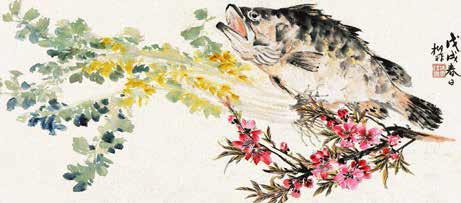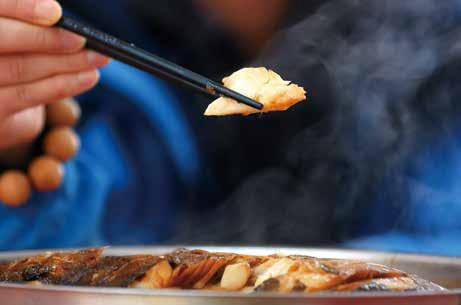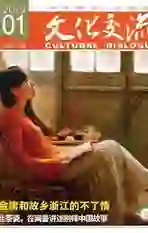Chinese Perch:Dream Beauty Portrayedin Art, Poetry
2019-01-11PanJiangtao
Pan Jiangtao
The Chinese perch (, or Mandarin Fish) is a fish sanctified in Chinese history, art, poetry, culture, and folklore. It is mentioned in an epoch-making poem by Zhang Zhihe (732-774?), a poet and Taoist of the Tang Dynasty (618-907). The poem is epoch-making because it is one of the first Ci-poems that appeared in history. Back then, few poets wrote poems in this style. Zhangs Ci-poem about a recluse angling in rain and two Ci-poems by Li Bai, arguably the greatest poet of the Tang, are considered by poetry scholars as the first chapter of Ci-poems, which flourished and climaxed in the Song Dynasty (960-1279). In the poem, the perch, white egrets framed against the backdrop of mountains, and peach flowers add up to an idyllic pastoral scene and a carefree existence. Standing in the rain and knowing there is no rush to go anywhere, the angler quietly enjoys the moment and savors whats around him. Rare in Chinese poetry is a life away from the madding world so vividly depicted.
Chen Shizeng (1876-1923) was a prominent artist and art educator of his time. In an exhibition at China Art Museum in November 2016 in commemoration of the 140th anniversary of the birth of Chen, a painting titled was among the works of art on display by the artist. He wasnt the only modern artist who painted the perch. The fish can also be seen in masterworks by Pan Tianshou, Wu Fuzhi, Wang Xuetao, Ye Shangqing, and Gao Guanhua, just to name a few modern masters.
In the summer of 1921, the Japanese artist Komuro Suiun (1874-1945) came to Beiping (Beijing of today) to attend an exhibition of artworks by both Japanese and Chinese artists. Komuro Suiun visited Chen, a celebrity of the cultural circles of Beiping, and they talked about the poem by Zhang Zhihe. The Japanese artist said regretfully that he had never seen the perch. Later, Chen had a perch bought and kept it alive so that Komuro Suiun could take a look at the famous fish. It was because of this encounter with the Japanese artist and the perch that Chen Shizeng created the painting and named it . He wrote an inscription on the painting to explain the occasion and the inspiration.

陸抑非《桃花鳜鱼肥》This painting by Lu Yifei portrays a perch and peach blossoms

徽州名菜臭鳜鱼Take a look at Stink Perch, a famous dish of Huizhou Cuisine
The perch was a delicacy enjoyed through centuries in ancient China. The fish was one of the eight tributes from Zhejiang to the royal house in the capital during the Qing Dynasty (1644-1911). It is still a popular delicacy on the menu of restaurants in Zhejiang and many other provinces in the south. There are perch recipes recorded in ancient essays and history and there are legends about scholars who enjoyed perch. Mei Yaochen (1002-1060), a celebrated poet of the Song Dynasty, wrote a poem about a perch dinner. The reader could well imagine, on the basis of the poem, that Mei was a gentleman who enjoyed the delicious fish quietly. Wang Zengqi (1920-1997), a modern essayist, storywriter, and gourmet, wrote a perch recipe and his perch-eating experience in a vivid paragraph in an essay. The reader could well imagine that his ecstasy knew no bounds when he was enjoying the perch he had just cooked. It is said that the Ministry of Foreign Affairs picks chefs for Chinese embassies and consulates by finding out how well these chefs can make Braised Mandarin Fish in Shape of Squirrel, a delicacy in Suzhou cuisine that originated in the south of Jiangsu Province. The delicacy has been popular with international dignitaries attending banquets and dinners at Chinese embassies and consulates across the world for decades.
There are many ways for making a perch dish. In Zhejiang, the most common on restaurant menus are the perch braised in soy sauce and the perch steamed. It isnt easy, however, to steam the perch well. Some chefs have a trick to make it more delicate and yummier. However, the most outstanding perch dish is called stink perch, just like stink tofu. It is a star dish of the Anhui Cuisine. Many restaurants in Jinhua, a city in central Zhejiang, serve this dish.
